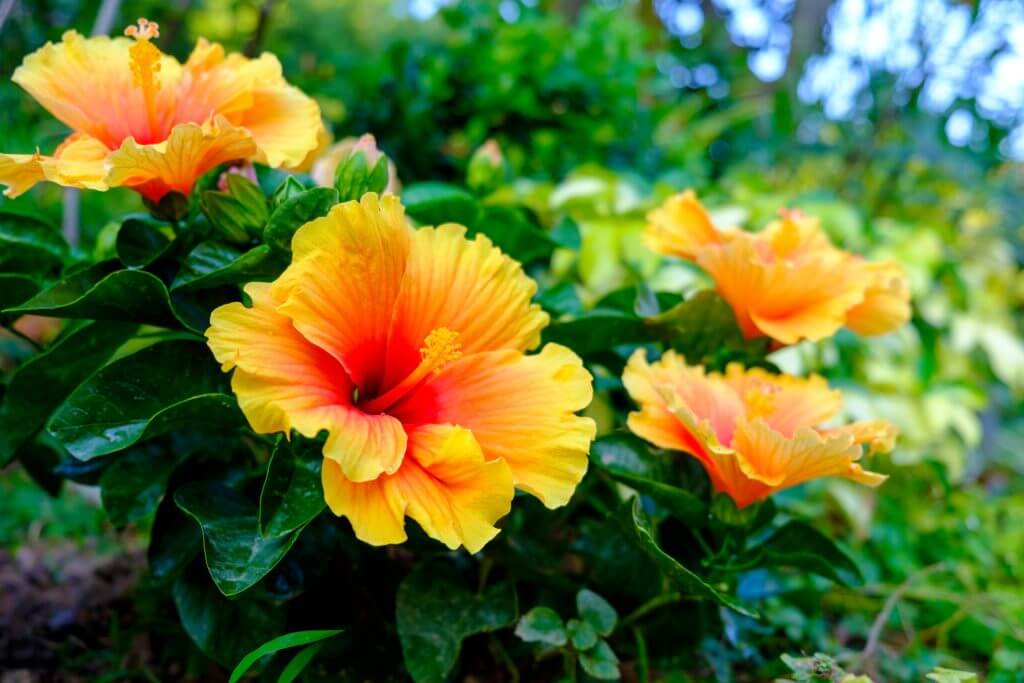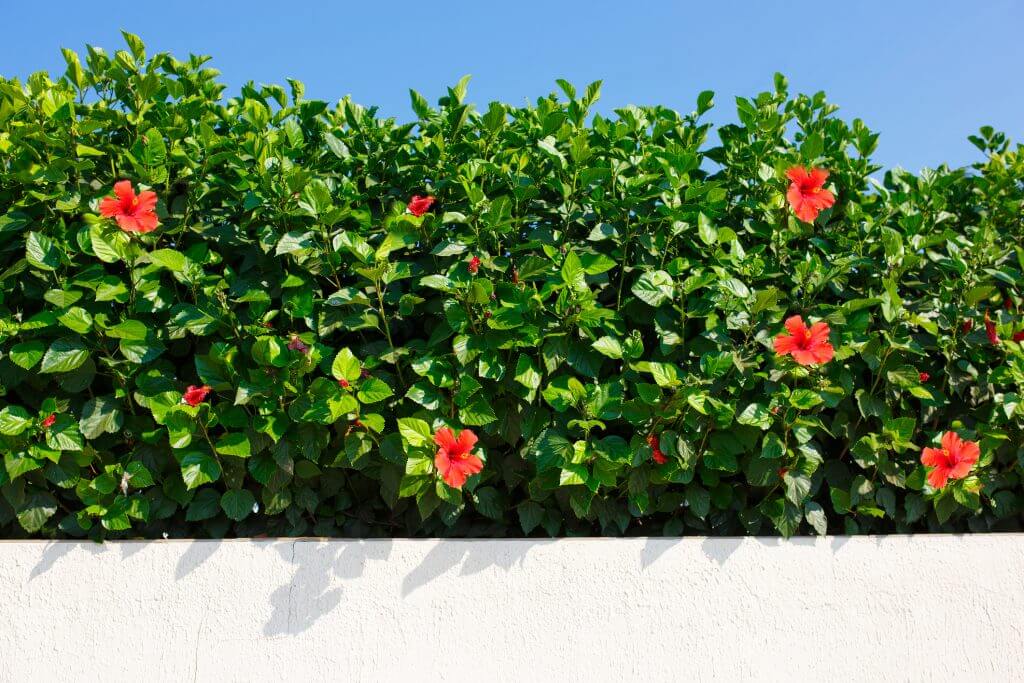Hibiscus is a pretty and attractive addition to the garden. This showy flowering plant adds so much character to the landscape.
There is no shortage of varieties of hibiscus to choose from, with each specie coming in different sizes and colours.

The Basics of Hibiscus
Hibiscus is a genus of plants that come from the Malvaceae family. There are several hundred species of this flowering plant.
This plant could either be annual or perennial, depending on the species. Some varieties are woody shrubs, and others are small trees.
Hibiscus is native to tropical, subtropical, and temperate regions.
This plant’s leaves are alternate and vary from ovate (oval or egg-shaped) to lanceolate (narrow oval then tapers to the end like the head of a lance). The leaves will have either lobed or toothed margin.
The most remarkable part of the hibiscus—its flowers—have 4 or 5 petals, and come in an array of bright shades of colours from reds to pinks, orange, peach, yellow, white, or purple. Certain species of hibiscus will change its flowers’ colours as they age.
You cannot miss the trumpet-shaped blooms of the hibiscus, which could grow at dainty 1.5 inches (4 cm) to as broad as 7 inches (18 cm).


Planting Your Hibiscus
Hibiscus plants are hardy and versatile in tropical conditions. These flowering plants can be planted in the garden or containers, and can also survive as indoor plants.
There are also varieties of hibiscus that can survive colder climates, and some would even withstand frost.
You can buy young hibiscus plants or grow them from seed or cuttings.
Plant the hibiscus in spring.
If you are planting from seeds, sow the hibiscus seeds indoors during winter, for about 12 weeks before the last frost date. Another option is to sow the seeds outdoors in the spring after the last frost.
Plant hibiscus in full sun, but partial sun could also work.
This plant loves well-draining soil and will tolerate most types. But the best types of soil for hibiscus is neutral to slightly acidic.
Protect your hibiscus from strong winds or plant them where they are not too exposed.
Plant hibiscus cuttings or young plants with their stems just at the soil surface. Water well after planting.
Consider the mature size of the hibiscus you are planting when spacing them out.


Caring for Your Hibiscus
Hibiscus plants are native to tropical regions, so they prefer temperatures between 60 to 90 °F ( 16 to 32 °C).
If you have them in containers outside, bring them indoors as soon as the temperature drops below the ideal.
Hibiscus require a lot of water while blooming, and daily watering during warmer weather.
Water less as the weather gets colder. Let your hibiscus’ soil dry out before watering in winter.
To ensure active blooming of your hibiscus, keep it fertilised with a high potassium fertiliser in the summer. If you will use liquid fertiliser, dilute and use it once a week. If you use a slow-release fertiliser, do so once a month.
Do not fertilise in the winter.
Common Problems with Hibiscus
One major concern for hibiscus is mealybug infestation. You will notice the white cotton-like growth on the hibiscus buds, leaves, or stems. Trim away the affected part and apply a pesticide.
[elementor-template id=”4604″]
[elementor-template id=”6387″]
